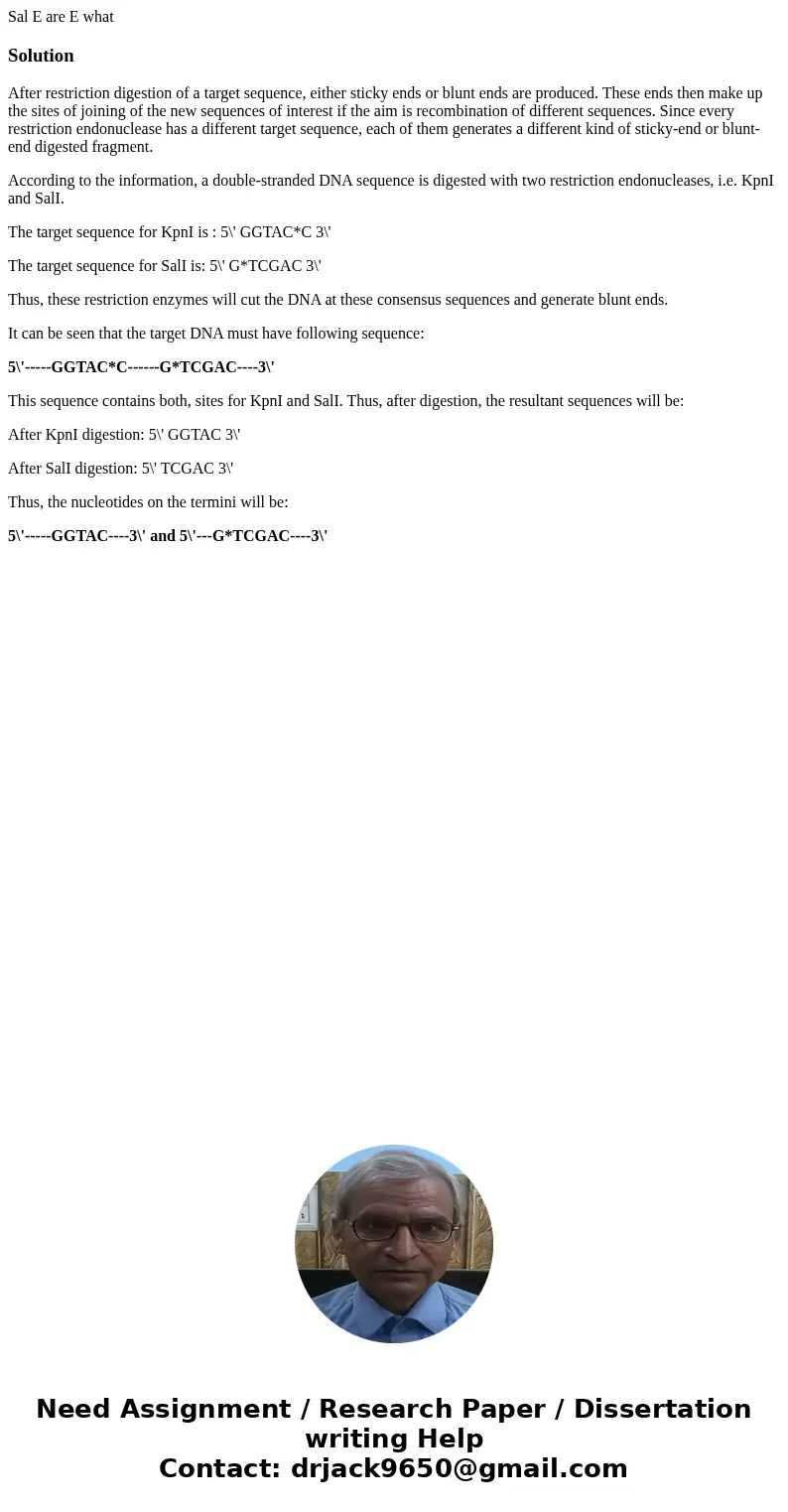Sal E are E what SolutionAfter restriction digestion of a ta
Solution
After restriction digestion of a target sequence, either sticky ends or blunt ends are produced. These ends then make up the sites of joining of the new sequences of interest if the aim is recombination of different sequences. Since every restriction endonuclease has a different target sequence, each of them generates a different kind of sticky-end or blunt-end digested fragment.
According to the information, a double-stranded DNA sequence is digested with two restriction endonucleases, i.e. KpnI and SalI.
The target sequence for KpnI is : 5\' GGTAC*C 3\'
The target sequence for SalI is: 5\' G*TCGAC 3\'
Thus, these restriction enzymes will cut the DNA at these consensus sequences and generate blunt ends.
It can be seen that the target DNA must have following sequence:
5\'-----GGTAC*C------G*TCGAC----3\'
This sequence contains both, sites for KpnI and SalI. Thus, after digestion, the resultant sequences will be:
After KpnI digestion: 5\' GGTAC 3\'
After SalI digestion: 5\' TCGAC 3\'
Thus, the nucleotides on the termini will be:
5\'-----GGTAC----3\' and 5\'---G*TCGAC----3\'

 Homework Sourse
Homework Sourse